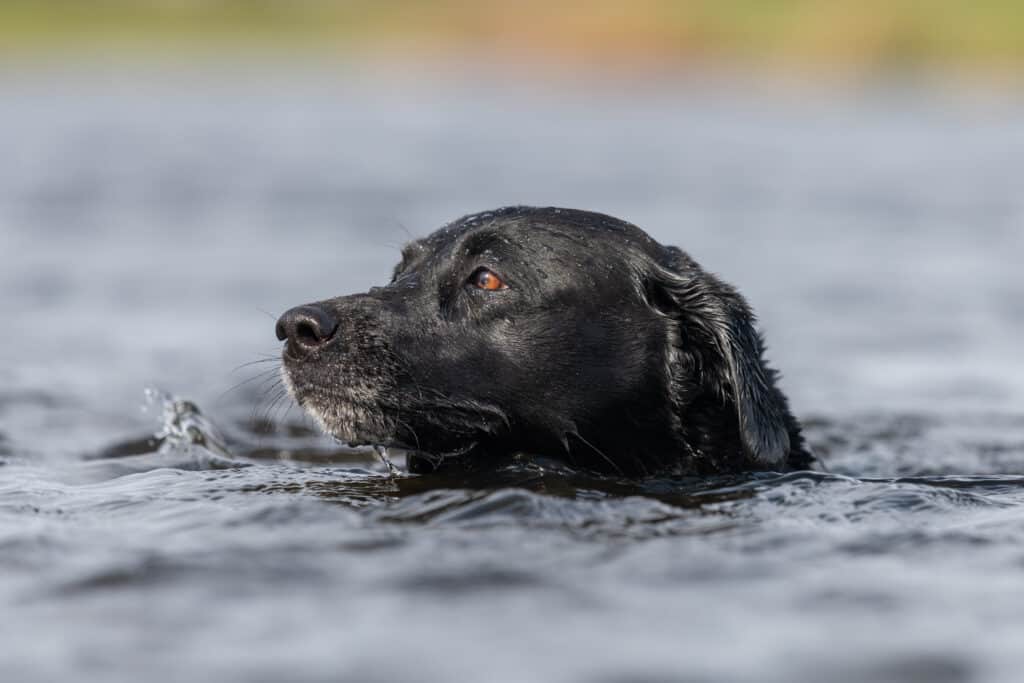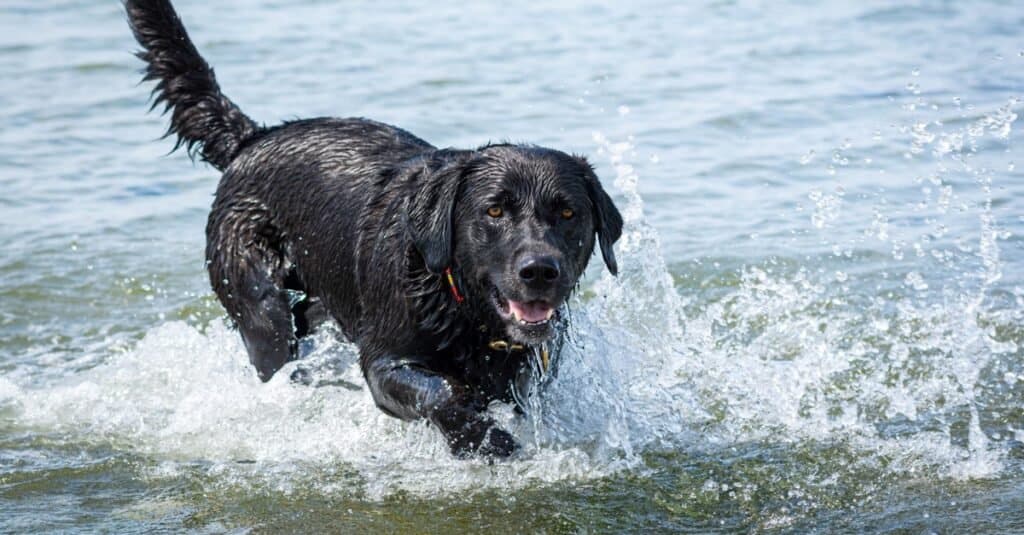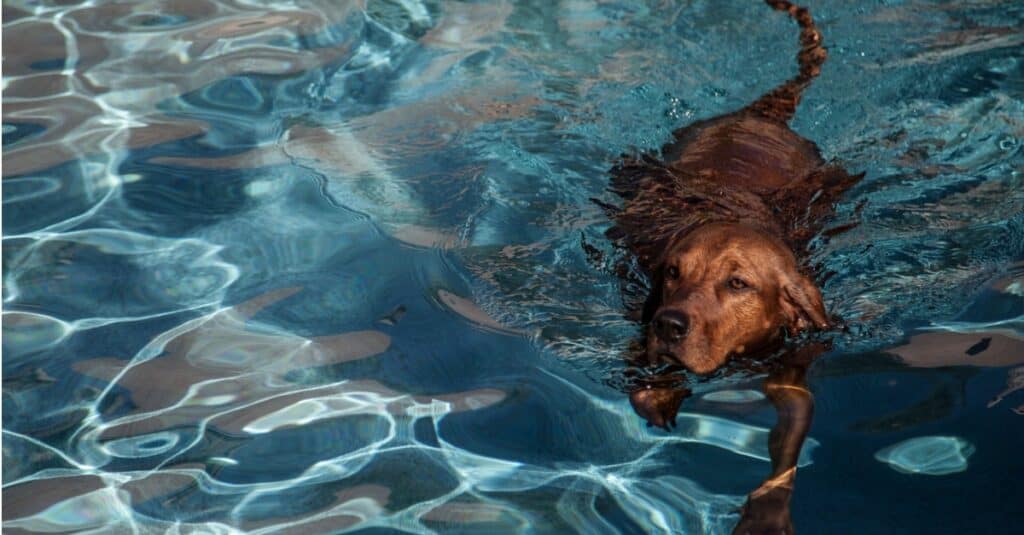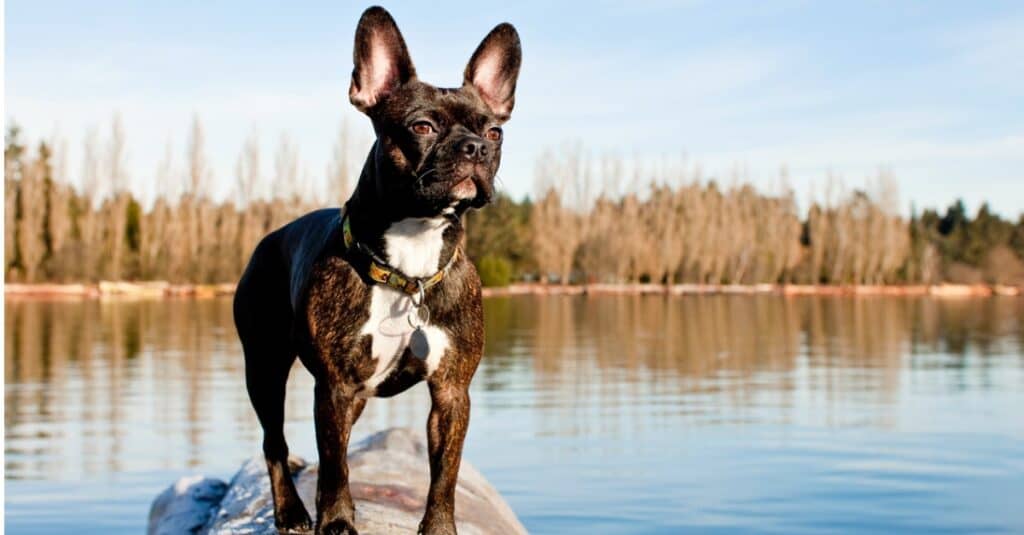You love swimming, and it’s a fun way to cool off. While enjoying a nice swim in the sun, you may wonder if your pup can cool off with you. Yes! Dogs can swim. Dogs can learn to swim just like people, taking it up much more quickly.
Many dogs are already proficient swimmers before entering a pool or other body of water. Dogs will immediately start swimming in the doggy paddle manner, which is cute to see. With more practice, your dog will improve as a swimmer and appear less agitated and splashy in lakes and pools.
There are a few things to know about dogs swimming. First, are there some dog breeds that don’t or can’t do it? Next, are there any benefits or risks? Lastly, what’s the best way to swim with your doggie? Grab your best swimwear and dive into this article to find out.
Getting to the Basics of Dog Swimming
Canine life jackets are recommended for dogs who have never been swimming since the buoyancy gives the dog more confidence in the water. Aside from the wearer’s ability to swim, life vests are essential in case of an accident or other unanticipated event, such as a dog slipping out of a boat.
Even if a breed initially avoids the water, it is often possible to teach it to swim. No matter the breed, always start in a calm, controlled environment, such as a backyard pool. Beginner swimmers may benefit from beginning in a bathtub. Move into deeper water after your dog is at ease with wet paws. Until they become acquainted and all four legs start to paddle, hold your dog by the handle of their life jacket.

Many dogs are already proficient swimmers before entering a pool or other body of water.
©Tom Meaker/Shutterstock.com
Benefits of Swimming
Your dog will benefit greatly from swimming in addition to having fun. Your dog works harder to swim against the water’s resistance than running or walking on land. They will have increased muscular strength and tone while strengthening the cardiovascular and pulmonary systems without the potential harm from concussive activity on land. A surprising fact is that one minute of swimming for a dog equals roughly four minutes of running.
Rehab
The entire health and rehabilitation of dogs with medical disorders that limit or forbid concussive exercise depend heavily on swimming. For instance, every orthopedic surgery requires that the supporting muscle be developed before the procedure. Swimming, on the other hand, allows for supported, non-concussive exercise to help grow muscles, whereas walking is an inappropriate exercise.
Weight Management
It can be challenging to exercise an overweight dog adequately on land without putting undue strain on bones and joints. Swimming is a form of assisted exercise that increases metabolic rate and burns calories.
Combining a healthy diet and swimming can help overweight dogs reach a healthy weight. Swimming is excellent whether your dog is healthy or wants them to enjoy themself while exercising. It can also boost their mood if they have physical health issues and need to swim to increase their mobility, range of motion, and overall body condition.

Canine life jackets are recommended for dogs who have never been swimming since the buoyancy gives the dog more confidence in the water.
©Andy Gin/Shutterstock.com
What Breeds Like to Swim
It’s a common belief that all dogs are born with the ability to swim or, at the very least, perform the so-called “dog paddle.” While that might not be the case. This is a good reason not to immediately throw a dog into a pool. Several breeds are frequently better swimmers. These canines have several generations of water-retrieving in their blood. Just a few of those dog breeds are listed here:
- Nova Scotia
- Newfoundland
- Golden Retriever
- English Setter
- Standard Poodle
- Irish Setter
- Portuguese Water Dog
- Chesapeake Bay Retriever
- Irish Water Spaniel
- Labrador Retriever

A happy and playful black labrador retriever dog swim and play in the ocean.
©Dan_Manila/Shutterstock.com
Dog Breeds That May Not Swim Well
Dog breeds that are incapable of swimming typically share several traits, according to the American Kennel Club (AKC). For instance, brachycephalic breeds, or those with flat faces or incredibly small snouts, are typically not good swimmers since it is too simple for them to get water in their noses, increasing the risk of drowning. Dogs with long bodies with short legs, as well as those with huge, barrel-shaped bodies, have difficulty staying afloat. Long-haired dogs with thick double coats may have trouble swimming. And last, some breeds are just not built to handle the shock to the body that cold water immersion causes.
- Basset Hounds
- Pugs
- Shih Tzus
- Dachshunds
- Cardigan Welsh corgi
- Pembroke Welsh corgi
- Boxers
- Bull Terriers
- Bulldogs

Dogs with long bodies with short legs, as well as those with huge, barrel-shaped bodies, have difficulty staying afloat.
©Firn/Shutterstock.com
Risks of Dogs Swimming
Many dogs experience “dry drowning” or “near drowning” incidents yearly when they have water in their lungs and later experience inflammation and other issues. And it’s not just for those in wild lakes and oceans or inexperienced swimmers. In ponds and even home pools, dogs can develop water inhalation.
Temperature and Chlorine
Remember the water temperature when your dog is having fun in the water since the colder the water, the quicker they will tire. If your dog lacks an off switch, keep an eye on their energy levels and halt playtime when they exhibit signs of exhaustion. Human hair and skin are dried out by chlorine, and dogs are not exempt.
Because the chemicals in pool water deplete the skin and coat of natural oils, dogs who frequently swim in the family pool may experience dry, itchy skin and a dry, dull coat. Additionally, black coats may see a little bleaching impact from chlorinated water, and lighter coats may even turn green.
Algal
Please take note of these and learn how to spot and avoid harmful algal blooms (HABs). You need to be familiar with them if you and your pup spend time in the ocean water. HABs, such as red tides, can result in significant, incapacitating, and even lethal issues for both people and animals.
Water Currents
Strong and hazardous water currents, or rip currents, flow perpendicularly away from the shore. They’ve taken animals and people to sea, and some of the outcomes were devastating. Contrary to popular belief, rip currents are not limited to the ocean.
They can happen in any body of water with breaking waves, including bigger lakes like the Great Lakes and seas. Because warning signs aren’t always displayed, exercise caution and learn how to spot and get away from rip currents.
Dogs with Health Conditions
Dogs who suffer from ailments like arthritis, dementia, seizures, or vision loss are more vulnerable around swimming pools and other bodies of water. These elements may make unintentional falls more likely and make it more challenging for animals to swim to safety. Even well-trained canines are susceptible to confusion and fear following an accidental fall into the water. It might be a humorous moment if you’re right there, helping your pet to safety. But if your pet got outdoors and nobody noticed, the situation would be everything but humorous.

Dogs who suffer from ailments like arthritis, dementia, seizures, or vision loss are more vulnerable around swimming pools and other bodies of water.
©iStock.com/videodet
How Long Can Dogs Swim?
If you’re unsure how long your pup should swim for a healthy workout, start with five to ten minutes and go from there based on their reaction. Breeds of dogs who are good swimmers will typically tolerate longer swimming sessions.
However, don’t be deceived by your dog’s boundless enthusiasm; you must end the session when you decide it is finished. When is it excessive? If your dog gets sluggish, demonstrates signs of fatigue, or has gone noticeably longer than the previous session.
Some dogs require 10-15 minutes of pure swimming, while others require 20-30 minutes for an effective workout. A dog’s type of swimming exercise depends on their age and general health. It can take between five and sixty minutes because different dogs are more enthusiastic than others.

Some dogs require 10-15 minutes of pure swimming, while others require 20-30 minutes for an effective workout.
©iStock.com/sliczna
Conclusion
Okay, so dogs and water can be an epic combination. On hot days you and your dog can enjoy a dip in a pool or lake. Remember that chlorine pools can dry their skin a bit, and there are some water dangers. Dogs that aren’t made for the water can still swim but need even more attention and caution.
If you are lucky enough to have a water dog, keep them safe! Swimming with your pup can give you fantastic work out too. Older dogs may need more support in the water, like a doggie life jacket, but they will get an easier workout than if they walk or run. Now that you know how dogs can swim, share it with others so they can swim with their dogs.
Up Next:
The photo featured at the top of this post is © Dan_Manila/Shutterstock.com
Ready to discover the top 10 cutest dog breeds in the entire world?
How about the fastest dogs, the largest dogs and those that are -- quite frankly -- just the kindest dogs on the planet? Each day, AZ Animals sends out lists just like this to our thousands of email subscribers. And the best part? It's FREE. Join today by entering your email below.
Sources
- The Dog People / Liz Coleman, Available here: https://www.rover.com/blog/can-all-dogs-swim/
- The Spruce Pets / Jenn Stregowski, Available here: https://www.thesprucepets.com/dogs-in-the-swimming-pool-good-idea-or-bad-2679916
- Wag!, Available here: https://wagwalking.com/sense/can-dogs-swim#:~:text=Dogs%20can%20swim%20and%20they,or%20other%20body%20of%20water.
- The Spruce Pets / Jenn Stregowski, Available here: https://www.thesprucepets.com/dogs-in-the-swimming-pool-good-idea-or-bad-2679916
FAQs (Frequently Asked Questions)
Are all dogs good swimmers?
Brachycephalic breeds, or those with flat faces or incredibly small snouts, are typically not good swimmers since it is too simple for them to get water in their noses, increasing the risk of drowning. Dogs with long bodies with short legs, as well as those with huge, barrel-shaped bodies, have difficulty staying afloat. Long-haired dogs with thick double coats may have trouble swimming. And last, some breeds are just not built to handle the shock to the body that cold water immersion causes.
How long should a dog swim?
If you’re unsure how long your pup should swim for a healthy workout, start with five to ten minutes and go from there based on their reaction. Breeds of dogs who are good swimmers will typically tolerate longer swimming sessions.
Thank you for reading! Have some feedback for us? Contact the AZ Animals editorial team.






